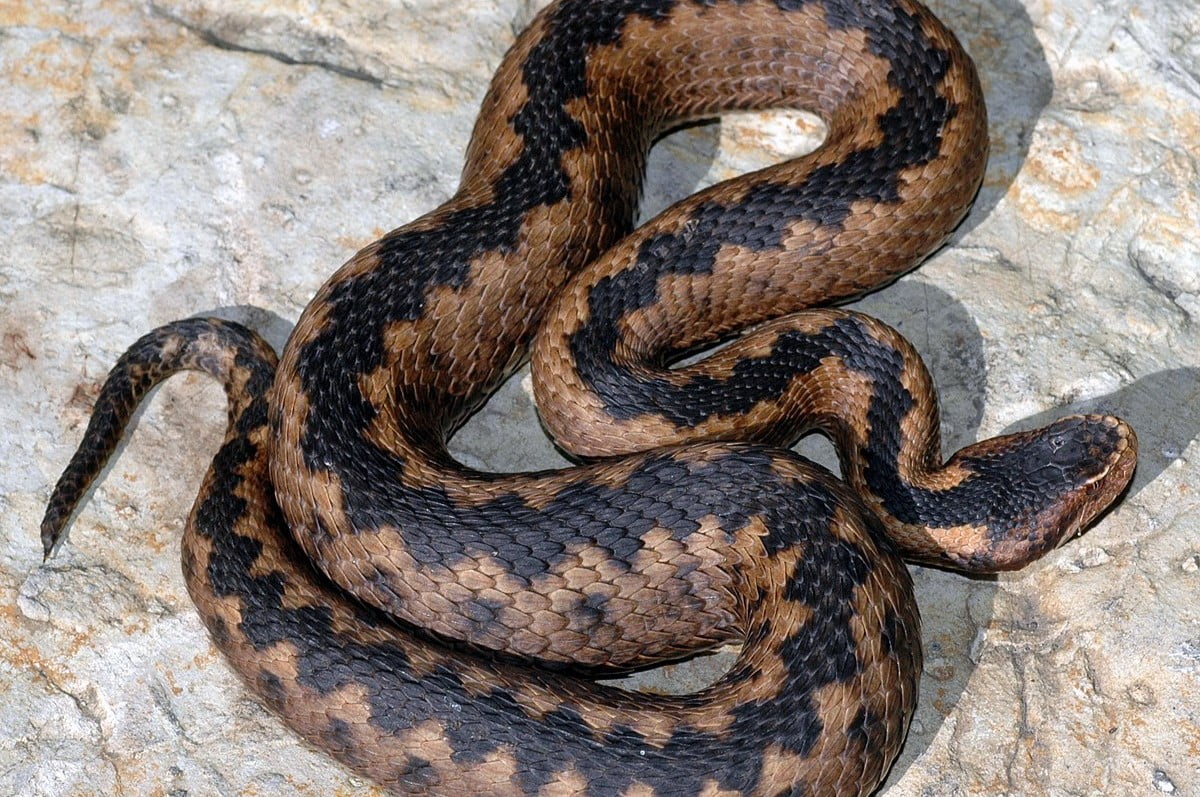
Orlov’s Viper is a fascinating snake species that is shrouded in mystery and often overlooked in the world of reptiles. Named after the renowned herpetologist Leonid Orlov, this venomous snake holds several surprising and unique characteristics that set it apart from other vipers.
In this article, we will delve into 14 surprising facts about Orlov’s Viper that will not only pique your curiosity but also increase your knowledge about these slithering creatures. From their venomous bite to their habitat preferences and even their reproductive behavior, prepare to be amazed by the remarkable features of Orlov’s Viper.
Key Takeaways:
- Orlov’s Viper is a highly venomous snake named after a famous herpetologist. It has a unique appearance, gives birth to live young, and plays a crucial role in its ecosystem.
- Conservation efforts are crucial to protect Orlov’s Viper from habitat loss and illegal pet trade. Its venomous bite and vital role in the ecosystem make it a fascinating subject for scientific study.
Exceptionally Venomous
Orlov’s Viper, scientifically known as Vipera orlovi, is one of the most venomous snake species in the world. Its venom is highly potent and poses a significant threat to both humans and prey.
Named After a Renowned Herpetologist
Orlov’s Viper is named after the Russian herpetologist, Sergei A. Orlov, who extensively studied and contributed to the understanding of snakes. This species was discovered and described by him in 1929.
Endemic to the Caucasus Region
Orlov’s Viper is native to the Caucasus region in Eastern Europe. It can be found in countries such as Russia, Georgia, and Azerbaijan. The rocky mountainous areas and forested regions serve as its natural habitat.
Distinctive Appearance
This viper species showcases a unique and striking appearance. It possesses a dark brown or black coloration with a series of distinct pale yellow or whitish spots along its body. This camouflage helps it blend in with its surroundings.
Slender & Agile
Orlov’s Viper has a slender and agile body, allowing it to move swiftly through its environment. It uses this agility to ambush and capture prey, including small rodents, lizards, and birds.
Viviparous Reproduction
Unlike many other snake species, Orlov’s Viper is viviparous, meaning it gives birth to live young instead of laying eggs. The female viper carries the developing embryos internally and gives birth to fully formed baby snakes.
Long Lifespan
Orlov’s Viper has a relatively long lifespan compared to other snake species. In captivity, they can live up to 20 years, while the lifespan in the wild is estimated to be around 10 to 12 years.
Nocturnal Behavior
This viper is primarily nocturnal, meaning it is most active during the night. It spends much of its daytime hiding in rock crevices, under debris, or in burrows to avoid extreme temperatures.
Cautious Nature
Orlov’s Viper is known for its cautious and defensive behavior. When threatened, it tends to rely on camouflage rather than aggression, with its coloration helping it stay hidden and avoid confrontations.
Venomous Bite
The bite of Orlov’s Viper can be extremely dangerous and potentially lethal. Its venom contains a potent mixture of toxins that can cause symptoms such as severe pain, swelling, and tissue damage.
Conservation Status
Orlov’s Viper is listed as a vulnerable species due to habitat loss, fragmentation, and collection for the illegal pet trade. Conservation efforts are being made to protect its natural habitats and promote awareness about its conservation needs.
Important Role in Ecosystem
As an apex predator, Orlov’s Viper plays a crucial role in maintaining the balance of the ecosystem. By regulating populations of small mammals and reptiles, it contributes to the overall health and stability of its habitat.
Adaptation to Harsh Environments
Orlov’s Viper has remarkable adaptability to survive in harsh environments. It can tolerate extreme temperatures, ranging from hot summers to freezing winters, thanks to its ability to hibernate during colder months.
Research and Scientific Study
Scientists continue to study Orlov’s Viper to gain a better understanding of its behavior, venom composition, and ecological significance. Research efforts aim to ensure the conservation of this fascinating reptile for future generations.
Orlov’s Viper, with its exceptional venom, unique appearance, and vital role in the ecosystem, remains a species of great interest and concern. The combination of its deadly bite and intriguing characteristics make it a captivating subject for scientific study and conservation efforts.
Conclusion
In conclusion, Orlov’s Viper is an incredible species with several surprising facts that make it truly fascinating. From their unique appearance and habitat to their intriguing behaviors and venomous capabilities, these vipers have captured the attention of researchers and enthusiasts alike. Despite their venomous nature, Orlov’s Vipers play an important role in the ecosystem as apex predators, helping to maintain the balance of their environment. However, it is crucial to respect their space and avoid any unnecessary interactions to ensure both human and viper safety. By understanding and appreciating these intriguing creatures, we can continue to protect and preserve their natural habitats for generations to come.
FAQs
Q: How venomous is Orlov’s Viper?
A: Orlov’s Viper is highly venomous. Its venom contains a potent cocktail of toxins that can immobilize and kill its prey.
Q: Where can Orlov’s Viper be found?
A: Orlov’s Viper is primarily found in the mountainous regions of Central Asia, including countries like Kazakhstan, Uzbekistan, and Tajikistan.
Q: What does Orlov’s Viper eat?
A: Orlov’s Vipers feed primarily on small mammals, such as rodents, as well as birds and lizards.
Q: How long can Orlov’s Viper grow?
A: Orlov’s Vipers can reach lengths of up to 2 feet, with males typically being smaller than females.
Q: Are Orlov’s Vipers aggressive towards humans?
A: Orlov’s Vipers are generally shy and prefer to avoid human contact. However, if threatened or provoked, they may bite in self-defense.
Q: Can Orlov’s Viper be kept as a pet?
A: It is not recommended to keep Orlov’s Vipers as pets. Their venomous nature and specific habitat requirements make them challenging to care for properly.
Q: Are Orlov’s Vipers endangered?
A: Orlov’s Vipers are currently categorized as “Least Concern” by the International Union for Conservation of Nature (IUCN). However, habitat loss and illegal collection for the pet trade pose potential threats to their populations.
Orlov's Viper captivates with its venomous bite and unique adaptations, but many other fascinating creatures await your discovery. Uncover the plight of endangered species, each with a story to tell. Dive into the world of reptiles, from scaly serpents to armored turtles. Embark on a journey through herpetology, where experts reveal the secrets of these incredible animals. Whether you're a nature enthusiast or simply curious, exploring the diverse realm of wildlife will leave you in awe of the wonders that surround us.
Was this page helpful?
Our commitment to delivering trustworthy and engaging content is at the heart of what we do. Each fact on our site is contributed by real users like you, bringing a wealth of diverse insights and information. To ensure the highest standards of accuracy and reliability, our dedicated editors meticulously review each submission. This process guarantees that the facts we share are not only fascinating but also credible. Trust in our commitment to quality and authenticity as you explore and learn with us.


